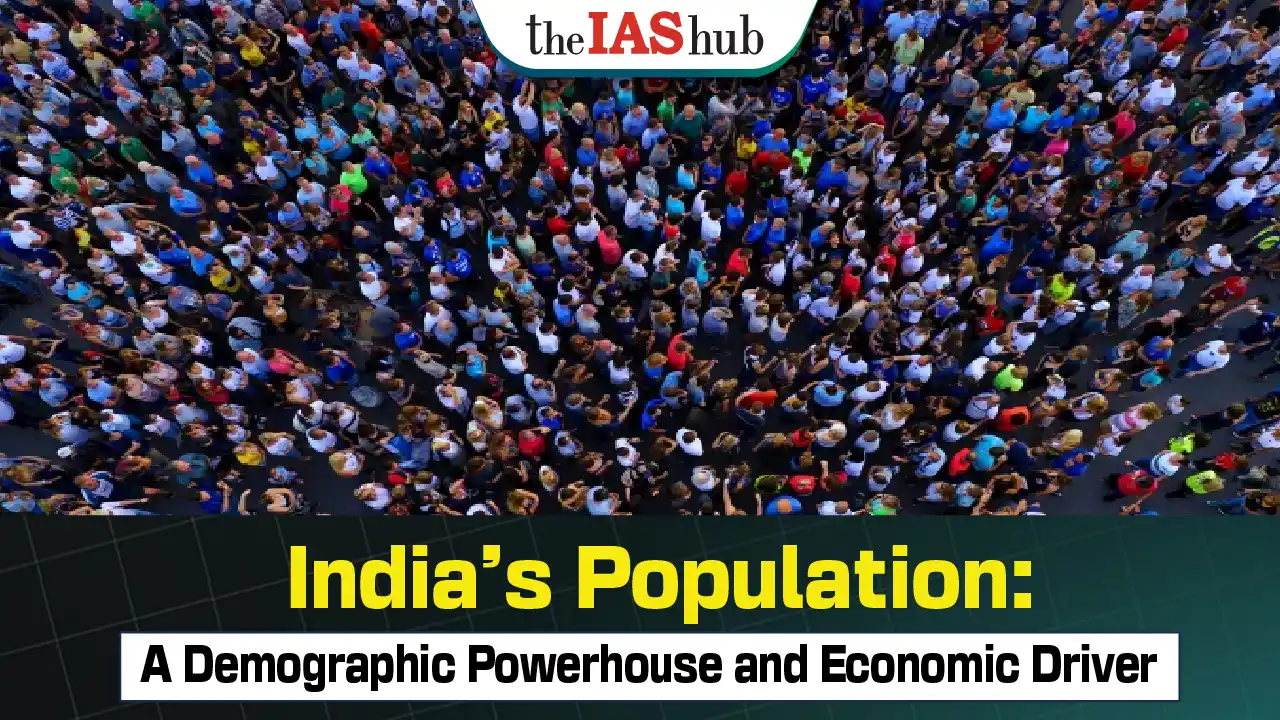India’s growing population is both a demographic dividend and a challenge. Explore how it drives economic growth, impacts labor quality, and necessitates population control policies for sustainable development and infrastructure balance.


India's population has become a defining feature of its economic and social landscape, offering both immense potential and complex challenges. As the world's most populous nation, it holds the key to a powerful workforce and sustainable development.
|
“Population is the strong driver of the economy as well as the quality of the labor force.” Ali Babcan |
|
Physical Factor |
|
|
Climate |
Low population density in extreme weather areas |
|
Landform |
Preference for flat plains and gentle slopes |
|
Natural Disasters |
Inhibition of population concentration due to frequent storms, earthquakes, floods, and wildfires |
|
Socio-economic -cultural Factors |
|
|
Industrialization |
Industrial belts attracting large populations, like the Kobe-Osaka region of Japan |
|
Urbanization |
Cities offering better economic possibilities, educational and medical resources |
|
Social Organization |
Promotion of migration and settlement in new regions through community networks |
|
Demographic Factors |
|
|
Migration |
Migration influenced by push factors (negative circumstances) at the place of origin and better opportunities in distant lands |
|
Political Factors |
|
|
Political turmoil |
Negative impact on population growth due to conflicts between political parties or persons of different religious beliefs |
|
Prejudice |
Negative impact on population growth due to prejudice or discriminatiE.g., Delhi Riots 2020, Manipur Riots 2023, etc. |
|
Interesting Facts: India surpassed China as the world’s most populous country in 2023 with India has catching up with China’s population of 1,426 million. |
|
Advantages of Demographic Dividend |
Challenges of Demographic Dividend |
Population Control Bill Introduced in Lok Sabha:In December 2022, two Members of Parliament of the Bharatiya Janata Party, Ravi Kishan and Nishikant Dubey, introduced in the Lok Sabha a private members’ Bill aimed at population control in India. |

The government should offer programmes or courses that are employment-related and job-oriented to help people looking for work. The government might increase employment for the overall economic benefit of our nation by investing in career-focused training and related economic changes that result in new skill requirements for the global workforce.


Refine your answer writing skills and elevate your UPSC preparation with personalized support and expert feedback.
Fill out the form to get started with the program or any other enquiries !








Are you dreaming of becoming an IAS officer? Then, IAShub can be your best guide. It is one of the Best IAS Coaching in Delhi. Many students who want to clear the UPSC exam join IAShub for learning. The institute gives both online and offline classes. Their teachers are experienced and helpful. They easily explain every topic. Students also get notes, tests, and tips to do well in the exam.
IAShub is in Delhi and is trusted by many UPSC students. It offers coaching for every part of the UPSC exam – Prelims, Mains, and Interview. The classes are simple and easy to understand. The teachers are experts and guide students in the right way. IAShub is also known for its helpful notes, test series, and answer-writing practice. IAShub is the best coaching in Delhi and also gives UPSC Online Classes. This helps students from any place in India to learn. The online classes are live and also recorded. So, students can watch them anytime. These classes cover the full UPSC syllabus.
Here are some important services provided by IAShub:
The UPSC Civil Services Exam has three parts:
This exam is tough, but with the right guidance, it becomes easy to manage. Students must study smart and stay regular.
IAShub supports students from the beginning to the end. It gives the right books, tests, and notes. The classes are easy to follow, and the teachers are always ready to help. Students get personal doubt sessions too. The test series and answer checking help students learn where they need to do better. Also, free study materials save time and money.
IAShub also guides students during the final stage – the interview. Experts take mock interviews and give useful tips. This full support makes IAShub one of the best IAS coaching in Delhi.